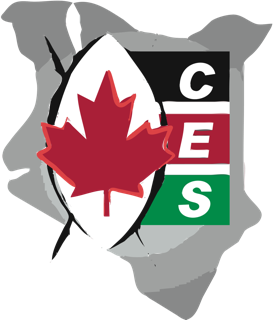
Education and CES Canada
R2E (Right to Education) Project
When CES started in 2003, it was largely in response to the devastating impact that HIV/AIDS was having in Kenya. Thousands of children and teenagers had been orphaned left with only one parent or none. Many were being raised, as is the Kenyan way, by extended family members.
While primary education had long been free and widely available in Kenya – although of highly variable quality – there were many students unable to continue past Standard 8 (equivalent to Grade 8 in North America). Since there was little Kenyan government funding for secondary school, many students had to leave their dreams of further schooling. Their families were unable to pay school tuition fees, or manage the cost of school uniforms, lunches, school supplies and other necessities.
CES leverages local connections to help students
CES developed a system that built on the deep connections that the Patron and co-founder of CES Kenya, together other CES Kenya Board members, had with the local community. They recruited Principals and school board members to help with selecting “bright, needy and ambitious” young people to support them through secondary school.
That support included payment of students’ tuition fees, support for the costs of uniforms, essentials like shoe polish (schools require students to maintain a high standard of appearance), money for lunches and other incidentals.
CES students have the security of knowing that their school costs are covered. Many of our students have spoken movingly about the fear and dread that comes from being called out of their class and “sent home for fees,” because those fees have not been paid.
As a result of CES support, CES students are able to focus on their studies, secure in the knowledge that their costs are covered.
New focus supports students at the post-secondary level
For the first twelve years, CES has focused on helping students at a high school level, because the Kenyan government was unable to provide much support for secondary education.
Since 2017, the government has provided more funding to secondary education. Although we continue with the secondary scholarship program, there is not as great a need in this area. Rather, the need that our organization sees now is to give students a chance to higher education at the post-secondary level. The results are positive as many of our students have gone on to careers in education, health care, medicine, business, science and agriculture.
Program Costs:
Annual Scholarship
$250 Cdn – includes school fees, school uniform, school resources, backpack, treated anti-malaria mosquito net, health care and one hot meal per day. Where distance or other circumstances prevail, students are admitted to a CES Boarding Schools (School fees are $350 Cdn).
Student Intern Scholarship
$225 Cdn – CES Grads who achieve a B+ grade or higher in the KCSE national exams are given a scholarship to remain at their school for a period of 6-8 months to work as Teacher Assistant and mentor for younger CES students. Funds are now available to pay for university registration costs when admitted to university the following year.
University Scholarship
$750 Cdn/semester – a number of CES Grads are admitted to a public university each year. Unable to pay the school fees they forfeit higher education learning. With two terms each year, registration fees amount to $1500 Cdn per annum.
Felistas Barasa, former Principal of Namirama Girls Secondary School encourages her CES graduating students. Mdme Barasa has been a long-time friend and supporter of CES and was an inspirational school leader, admired by her students.





